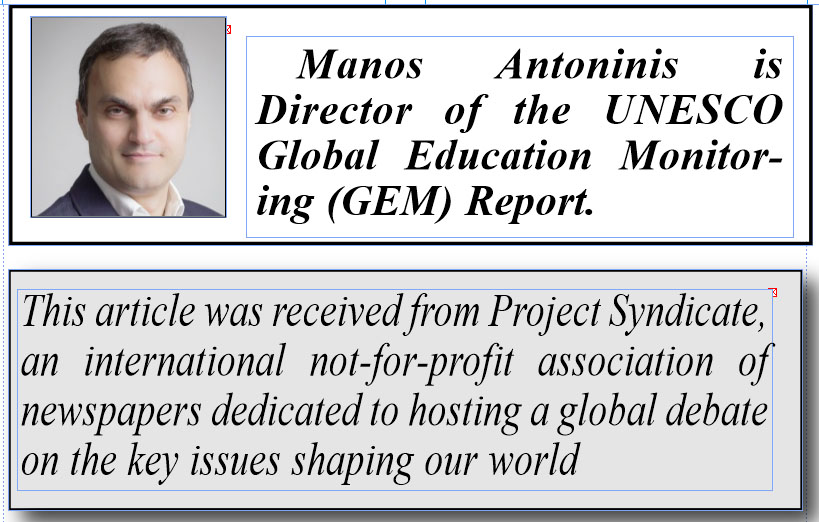PARIS – Recent decades have brought significant progress toward a more just and equal world in areas such as poverty reduction, immunization, and life expectancy. But in some areas, change has been painfully slow. In one such area – gender equality in education – the problem is as straightforward as it is profound: we are focusing on the wrong metric.
Of course, there is good news. As the UNESCO Global Education Monitoring (GEM) 2019 Gender Report notes, the number of adult illiterate women in upper-middle-income countries fell by 42 million from 2000 to 2016. And progress on enrollment in most countries means that richer countries increasingly face the opposite challenge, as more boys than girls do not complete secondary education.
These disparities expose the limitations of the current approach, which focuses on gender parity – that is, ensuring that equal numbers of boys and girls attend school. Of course, getting girls into classrooms remains hugely important in some of the world’s poorest countries, and it can be achieved with targeted measures, say, to make their daily commute safer. Among the 20 countries with the largest such disparities, Guinea, Niger, and Somalia stand out for their commitment to closing the gap.
But balanced school enrollment numbers are only the beginning. There is also a need to address the underlying causes of unequal educational outcomes. In low-income countries, this means assessing what happens in school and the opportunities available after completion – both of which are shaped by social attitudes about gender.
Around the world, girls and women constantly receive the message that their primary role should be that of caregiver. In the sixth World Values Survey, carried out between 2010 and 2014 in 51 countries, half of respondents agreed or strongly agreed that “when a woman works for pay, the children suffer.”
Given these perceptions, families and communities are less likely to place a high priority on girls’ education. The same survey found that one in four people worldwide still believe that a university education is more important for a boy than for a girl.
This message is reinforced in schools. Students study from textbooks that reinforce stereotypes and omit women’s historical contributions. And while the majority of teachers are women, school leaders are usually men.
It is probably not surprising, then, that even those girls who do receive some education are more likely to pursue traditionally “feminine” career paths, including domestic and caring professions. Women account for just over a quarter of those enrolled in engineering, manufacturing and construction, and information and communications technology programmes.
Such gendered expectations also often lead to permissive attitudes – not only socially, but also legally – toward child marriage, early pregnancy, domestic work, and even sexual violence, including at school. At least 117
countries and territories still allow children to marry. Four countries in Sub-Saharan Africa prohibit girls from returning to school during or after a pregnancy. And girls in most countries are more than twice as likely as boys to be involved in child domestic work.
All of this severely limits the prospects of girls and women, leaving them economically, socially, and physically vulnerable. If we want to protect girls’ rights, including their right to an education, we need to act to change damaging policies and the social norms that underpin them. For example, education strategies should include relevant revisions to curricula and textbooks.
But in 16 of 20 countries with the largest gender disparity that we analyzed, such considerations are not on authorities’ agenda. Angola, the Central African Republic, Djibouti, and Mauritania barely mention gender at all in their education strategies.
Development partners can play a powerful role in changing this reality. In 2017, a little over half of total direct education aid included gender equality and women’s empowerment as either a principal or significant objective. If donors emphasized the types of comprehensive, attitude-shaping changes that are needed – as well as the imperative of creating solutions that are scalable, replicable, and participatory – they could help to spur the development of responsive government strategies and sustainable public programmes that serve everyone.
The world recognizes the benefits of delivering education to all: the United Nations Sustainable Development Goals include the target of eliminating gender disparities in education by 2030. But if those benefits are to be secured, we must acknowledge the shortcomings of an approach focused on enrollment figures. The GEM Report has already adopted a new framework for monitoring gender equality in education. Countries and donors should do the same – and adjust their education strategies accordingly.
Copyright: Project Syndicate, 2019.










